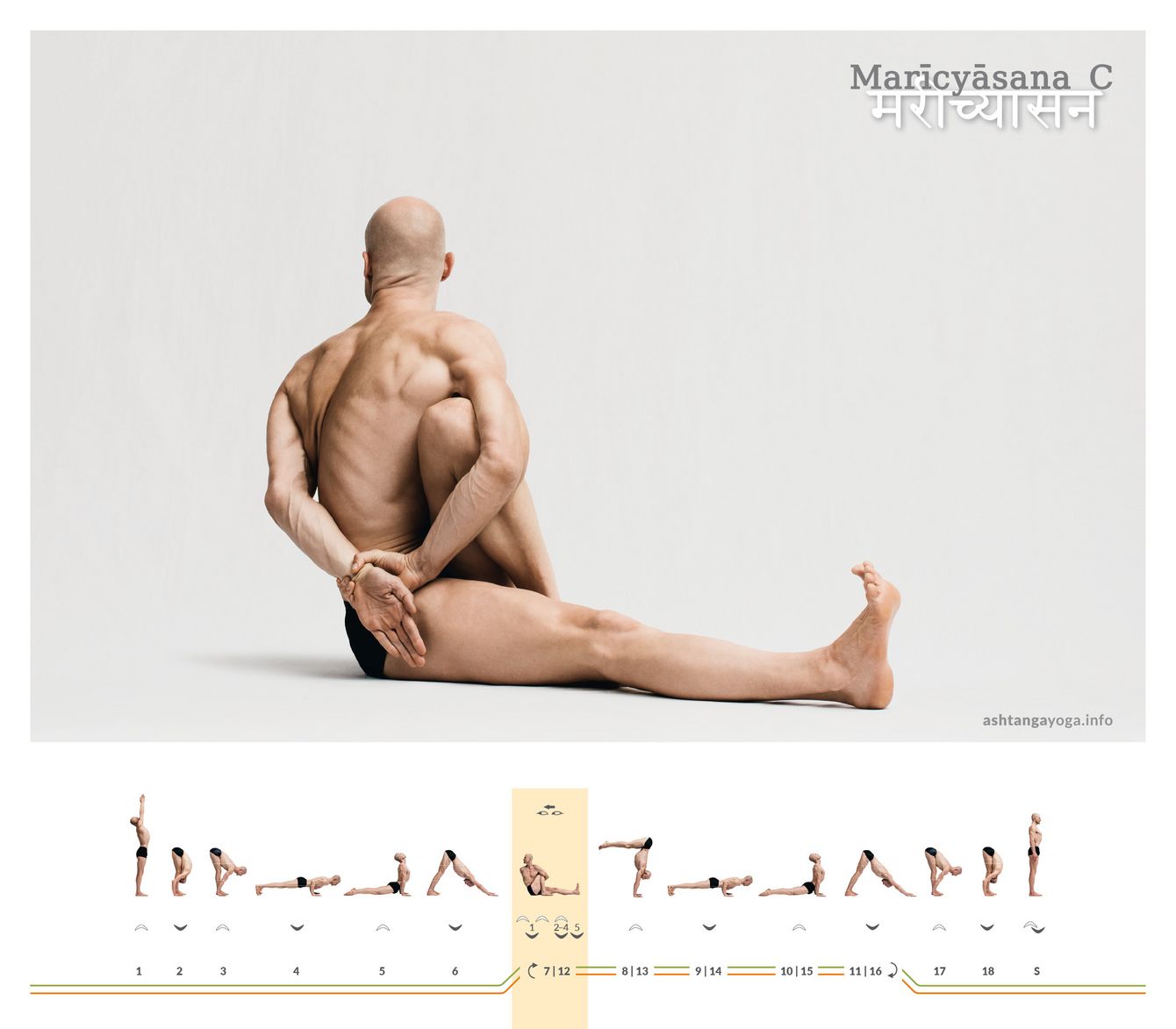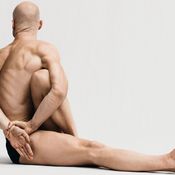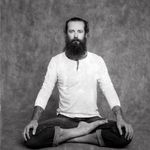

Speciality: The unique feature of the asymmetrical postures traditionally practiced in Aṣṭāṅga Yoga is that they follow a common principle of Vinyāsa-Count. You take the posture with the 8th or 15th movement (vinyāsa) and an exhalation. Marīcyāsana C and D are postures that you take with an inhalation, so the 7th movement (vinyāsa) already leads into the actual posture. Similarly, the next movement (vinyāsa 8) is the entry point into the recurring sequence of movements between the sides.
Directly from the pose of the "Downward Facing Dog" of the previous sequence of movements.
Vinyāsa 7 - Inhalation, Exhalation, Inhalation:
Exhaling, push yourself away from the Downward Facing Dog and glide into the balance on your hands. Use the exhalation to slowly lower yourself between your arms. Now set your right foot next to your left thigh with about a fist's width distance and as close to your pelvis as possible. Your left leg stays straight as in Marīcyāsana A. Then, inhaling, turn over to your right side, wrap your left arm around your right leg and hold your right wrist. Keep your gaze wide to the right until the fifth exhalation.
Note: As in Marīcyāsana A and B, it is essential here to bring the thigh of the right leg as close to the sides as possible, so that the left shoulder is in front of the thigh. Only then can the arm move freely around the thigh without creating an unfavorable lever at the shoulder joint. To accomplish this, first push your right thigh diagonally to the left with your right hand. Then stretch your left side far over the left-tilted right thigh. When the side and thigh have established good contact, you can move the left arm back and forth and hold your right wrist. Finally, straighten your right thigh from its slanted position.
Vinyāsa 8 to 11:
Follow the movement flow that you already know until you reach the "Downward Facing Dog".
Vinyāsa 12 to 16:
Repeat the sequence of movements on the other side of your body until you arrive again in the pose of the "Downward Facing Dog".
Immediately transition in the traditional count to the next posture and flow into the next movement.
Effect: The posture of Marīcyāsana C introduces the first seated rotation into the traditional sequence of Aṣṭāṅga Yoga. It is important to let the rotation arise primarily from the thoracic spine. The facet joints of the thoracic spine offer much room for rotation, while the lumbar spine is more suited for forward and backward bends due to its joint position. Too much rotation in the lumbar spine can lead to discomfort.
-
da stimmt was nicht mit der Beschreibung?Schade, beschäftige mich gerade sehr mit der schwierigen und vielschichtigen Asana und hoffte auf „Erleuchtung“ auf der Seite....Liebe Grüße da stimmt was nicht mit der Beschreibung?Schade, beschäftige mich gerade sehr mit der schwierigen und vielschichtigen Asana und hoffte auf „Erleuchtung“ auf der Seite....Liebe Grüße
-
Hallo Jeanette,
oh wie schön von Dir zu lesen.!
Vielen Dank für Deinen Hinweis. In der Tat, war hier noch der Text von Marichyasana B. Ich habe flux diesen mit dem korrekten Text ausgetauscht.
[...] Hallo Jeanette,
oh wie schön von Dir zu lesen.!
Vielen Dank für Deinen Hinweis. In der Tat, war hier noch der Text von Marichyasana B. Ich habe flux diesen mit dem korrekten Text ausgetauscht.
Viel Freude beim Eintauchen wünscht Dir
Ronald
-


 Dr. Ronald Steiner
Dr. Ronald Steiner
 Richard Pilnick
Richard Pilnick



Messages and ratings